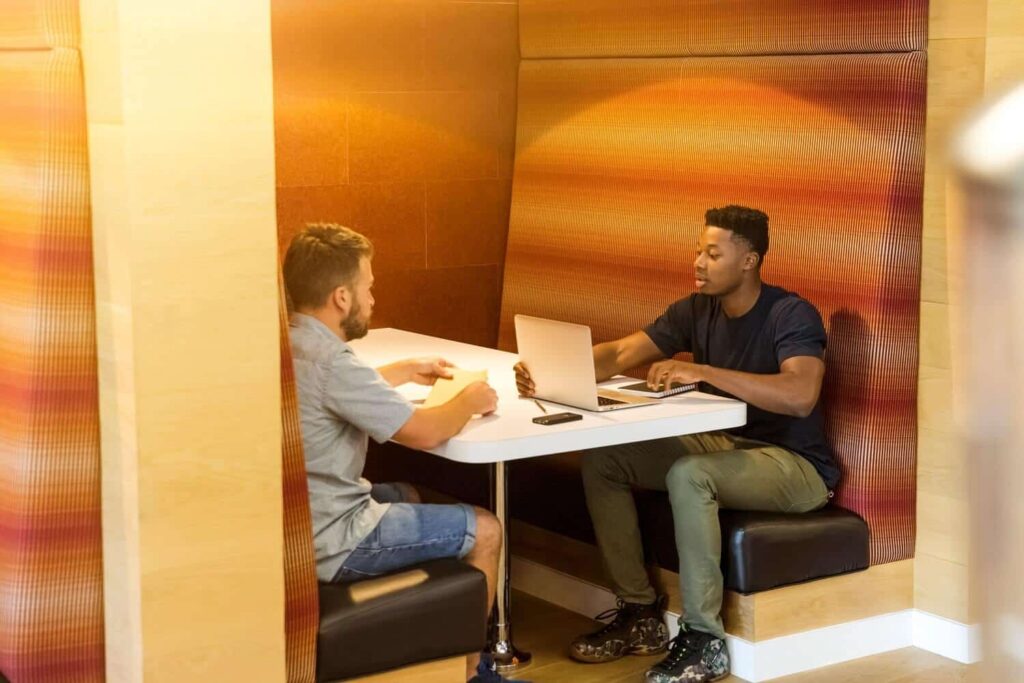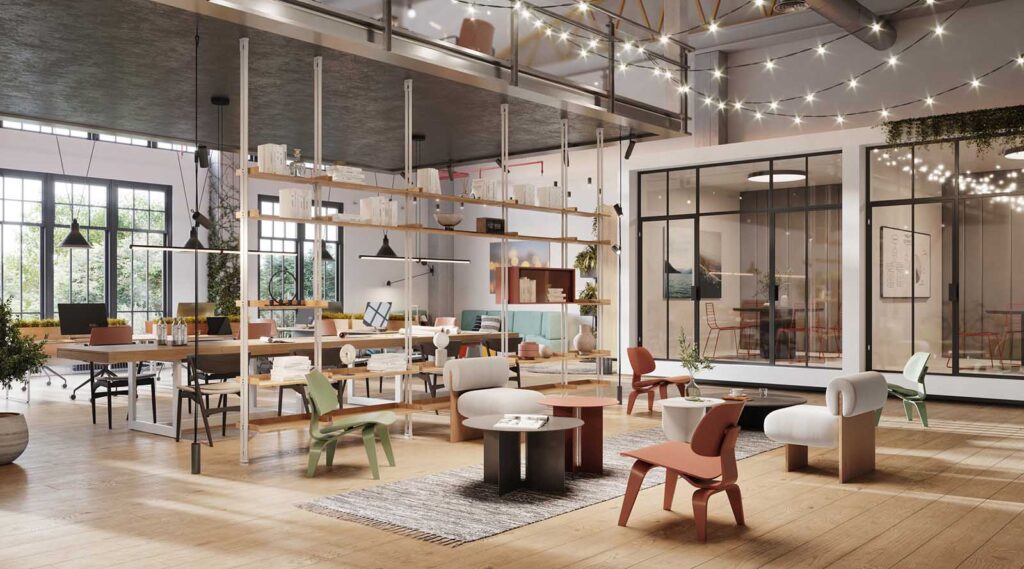Making Where You Work, Work For You
 When planning to design an office layout for your business, it is very important to consider the implications of your decisions. The way you fill your office space will directly affect how your business performs. A poorly designed office can lead to disgruntled employees, low productivity, poor communication, and a negative impact on your bottom line. Rather than quickly fill an office with furniture and equipment, business owners should take the time to consider what will make their office thrive.
When planning to design an office layout for your business, it is very important to consider the implications of your decisions. The way you fill your office space will directly affect how your business performs. A poorly designed office can lead to disgruntled employees, low productivity, poor communication, and a negative impact on your bottom line. Rather than quickly fill an office with furniture and equipment, business owners should take the time to consider what will make their office thrive.
Business Comes First
If your office doesn’t match your business needs, there is little chance your business can be successful. Before you start considering what color to paint the walls or how to decorate your desk, the essentials must be taken care of. A good place to start is by taking an inventory of things you must have. If your business hosts group meetings, you will want to establish an area for a conference room or roundtable. Office equipment is another factor to consider, so make sure you have the correct amount of computers, printers, etc., to meet the needs of your employees. Once you have compiled your “must-have” items and equipment, you can begin to focus more on the design and feel of your office space.
Ergonomics
Happy employees perform much better than unhappy ones, and the work environment plays a large role in determining that mood. By designing your office space to be ergonomically efficient, you will ensure your employees are happy and healthy. Office chairs that provide solid back support will help employees stay comfortable throughout their work day. Accessories for computers, mice, and keyboards can also help prevent conditions such as carpal tunnel and increase productivity when using computer systems. Wire ties can be used to prevent tangles of cords and wires behind or underneath your computer space. Also, as studies show that sitting for long periods of time can have negative impacts on health and, thus, happiness, consider looking into the purchase of a few standing desks, to make sure that employees who are getting a little stir crazy sitting down still have somewhere comfortable to continue working. By making these adjustments, employees are capable of doing their job better.
Empty Space
The last thing you want to do when designing a new office space is to fill the space wall-to-wall. Efficiently managing empty space allows room for your office and your business to grow and evolve. Empty space in an office serves multiple functions, the simplest of which is leaving ample room to add more. It is important to consider how you want to grow your company, especially if you’re looking to hire more employees or add more office equipment. Leaving the empty space will allow you to fit in a desk for a new hire or add a copy machine. Another benefit is that open space gives your employees room to work. Rather than packing in your employees too closely together, causing an uncomfortable tight space, they have room to breath and work without the pressure of someone over their shoulder.
Community
A common mistake in office designs is to separate departments completely, to the point where there isn’t much communication between them. This can lead to cliques and lack of personal interaction between co-workers. A well-designed office space opens up lanes of communication between co-workers and encourages cooperation. One way to achieve this is to organize your office furniture in a manner that employees can walk around freely between departments. Tall cubicle walls should be avoided, to prevent employees from feeling alone because they can’t see anyone else. Productivity increases in a strong office community because communication is wide open, so employees know what their co-workers are doing and everyone can come together as a well-oiled machine.
Interchangeable Pieces
Like any machine, an office space benefits from having interchangeable parts. The reason for this is your office needs may change over time, as your business grows. If your design is set properly, you won’t have to completely overhaul the office to adjust to a need. Furniture is an easily interchangeable part of your office; by using rolling desks and chairs or tables with removable pieces, you allow yourself the freedom to mix things up at your own leisure. This allows you to make adjustments in instances such as hiring a new employee or moving someone between departments. An office with interchangeable pieces can be constantly upgraded and manipulated to suit the business’s needs.
Ultimately there is no single perfect office design, as different layouts will fit the needs of different businesses. However, the factors compiled here can apply across any type of business. The layout of your space helps give your office a personality, and business owners should take the time to consider what they want the personality to say. So consider the needs of your business and employees, then start getting creative to build a productive and exciting environment to work.
Image Credit: freedigitalphotos.net/stockimages



